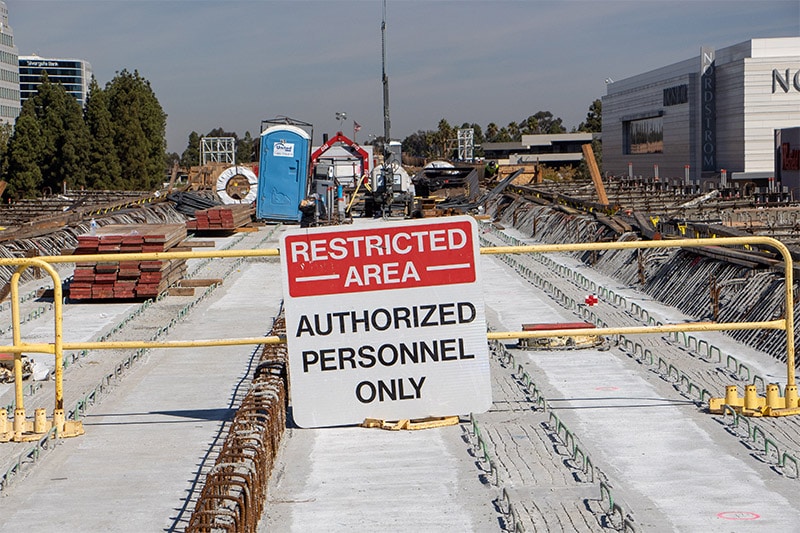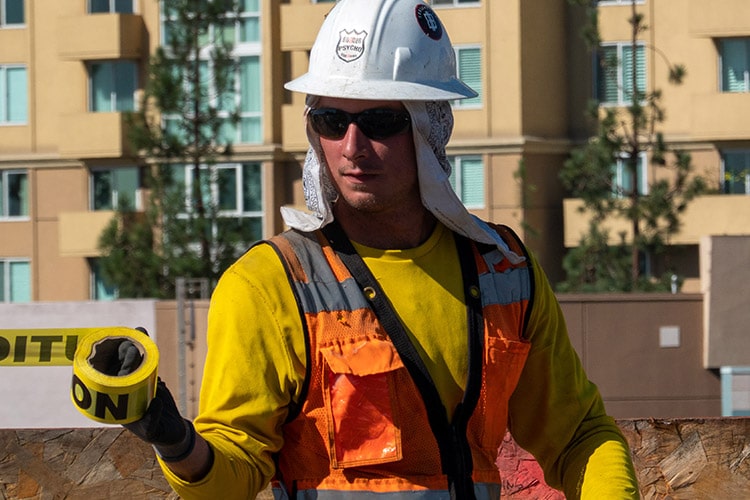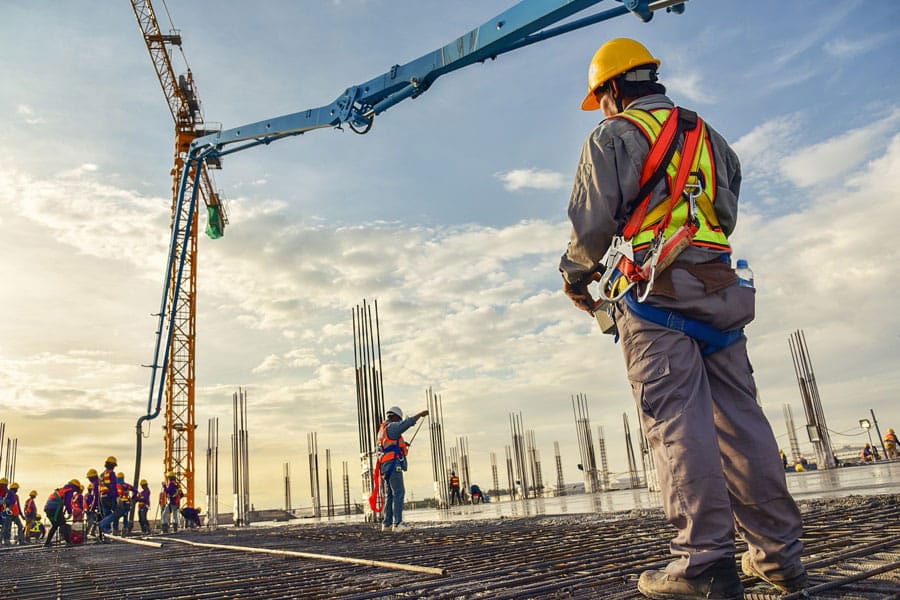As an “essential” business in many states, construction sites have by and large remained operational as the COVID-19 pandemic unfolds. Various factors make it impossible for the industry to go on hold like other segments of the economy. It may also be dangerous to pause an uncompleted project if it’s at a critical stage. Furthermore, as the crisis exposes vulnerabilities in countries’ healthcare and infrastructure systems, critical new projects will be needed.
Still, just because construction has continued in many places doesn’t mean that it’s business as usual. Like nearly every other industry, construction is undergoing rapid changes as new details about protecting against the virus emerge and industry groups move to ensure the safety of workers.
On-site safety measures
One of the things that makes ensuring the safety of a construction site so difficult is the constant flow of specialty workers between different areas of a jobsite. In many critical industries, workers have been able to continue their tasks in isolation, in some extreme cases even quarantining in their workspaces until a critical task is done.

But according to Dr. Somik Ghosh, professor at the University of Oklahoma’s Christopher C. Gibbs College of Architecture and a construction safety expert, this isolation isn’t practical in construction.
“Especially when the project gets toward completion, there is an influx of workers in different trades that come in during the finishing stages,” Ghosh said. “It’s not a question of the flow of workers within one workplace, but multiple workplaces where these individuals are traveling.”
This constant flow of workers from different trade specialty areas makes it especially critical to reduce on-site exposure to decrease the risk of transmission between jobsites.
Ghosh said that the industry will have to reduce physical contact between workers on each site to reduce the risk of transmission. “Reducing crowding is key,” Ghosh said. “It can be done by increasing total work hours so that people work in multiple shifts, or by taking a hard look at the way we used to schedule.”
“Instead of having everybody work on the same floor,” Ghosh continued, “maybe we think about splitting the workforce into multiple floors if it’s a multi-story building or working within different zones on a horizontal project.”
One method of reducing contact—already being implemented with success on construction sites throughout Australia—is to extend working hours to reduce the number of workers on sites at any given time. As the crisis continues to unfold, many experts predict the industry adapting similar measures globally.
Eugene Mason, a project superintendent for Chicago-based Power Construction, said that his team has had to reduce manpower and practice social distancing on a current hospital expansion project he’s leading. What’s more, each worker is getting their temperature taken before the start of each workday.
“It’s been challenging, but we’re working through it,” Mason said.
Mason said the new safety measures, while necessary, are having a material impact on the project’s schedule, slowing productivity to some extent and pushing out the projected timetable for completion.
Still, the team is trying to keep the project on track as much as possible given the situation. “There were some instances where we had to work around and maybe do some night and weekend work in order to keep the schedule within some type of framework,” Mason said. He said so far no one working on the project is known to have been infected with the virus.
Modular construction to the rescue?
In recent years, the construction industry has moved toward relying more on off-site fabrication, reducing build times by prefabricated components and bringing them to the project site for installation.
With COVID-19 increasing the need for staggered labor solutions, Ghosh said that this modular approach to construction will likely continue to grow in popularity. “Doing more off-site fabrication and construction allows workers to spend less time on site assembling and installing,” Ghosh said. “Additionally, fabrication can take place in a more controlled environment, where you’re using more machines, or if you’re using human workers you can have them work in multiple shifts and keep them separated.”

Many experts in construction management and safety see off-site fabrication as the next logical step as the industry strives to create more effective workflows on all projects. “If we’re pushing for efficiency, we will see more prefabrication and vertical construction,” Ghosh said. “One of the best ways to encourage social distancing is to reduce the amount of time workers are exposed, and one way of doing that is to take as much shiftwork as we can from on site to off site.”
A developing situation
One of the most unique aspects of running a construction company safely during the COVID-19 pandemic is how much still remains unknown about the virus. According to Ghosh, the rapidly shifting landscape of information around COVID-19 means that big-picture oversight by government or industry regulatory groups is impractical—at least for the time being.
“Construction encompasses a variety of activities and projects,” Ghosh said, “so trying to put everything into one bin, so to speak, won’t be a prudent approach.”
With new information about COVID-19 safety being discovered almost daily, it’s impractical for the industry’s largest regulatory bodies to put together guidance that will work for every jobsite. Because of the varied nature of “essential” construction projects, Ghosh said that, moving forward, regulations on-site safety will have to be handled on a case-by-case basis.
“People will have to be creative,” Ghosh said. “There will be some outlining guidelines, but I don’t think any state or federal regulations will be able to create a detailed list of best practices. Ultimately, figuring out a safe work environment will be based off the individual needs of a particular company or site, with each group working to figure out how to protect employees while still keeping them on the job.”
As society gains more clarity about the nature of the virus’ transmission patterns, a regulatory framework will likely begin to emerge. Until then, companies and individuals will have to make their own calls on how to balance COVID-19 safety with the practical demands of their construction site.















